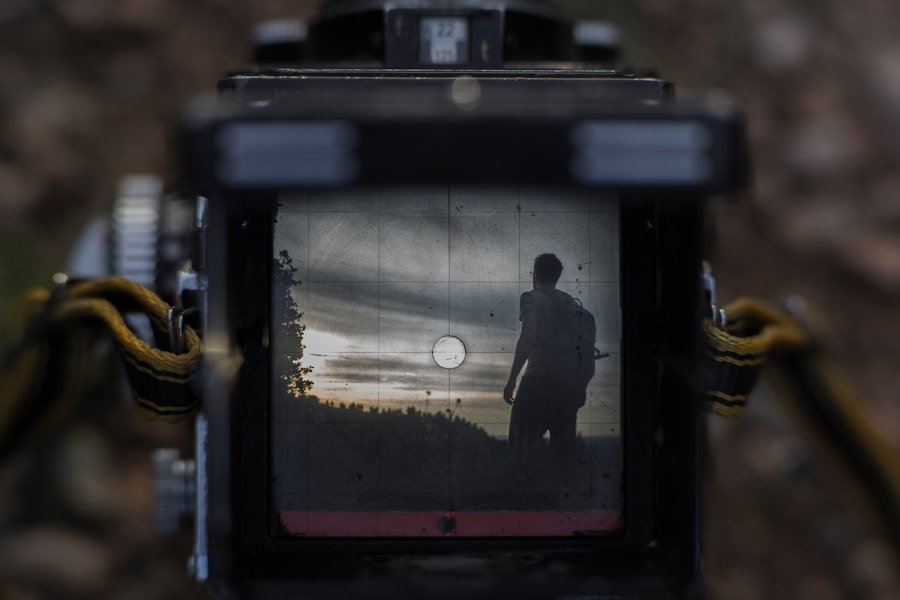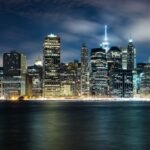When it comes to choosing the right camera equipment for travel, there are a few key factors to consider. First and foremost, you’ll want to think about the type of photography you’ll be doing while traveling. If you’re planning on capturing landscapes and cityscapes, a wide-angle lens may be a good choice. On the other hand, if you’re interested in wildlife photography, a telephoto lens may be more suitable. Additionally, consider the size and weight of the camera equipment. Traveling with heavy and bulky gear can be cumbersome, so opting for lightweight and compact options may be more practical.
Another important consideration is the durability and weather resistance of the camera equipment. Traveling can expose your gear to a variety of environmental factors, so investing in weather-sealed equipment can help protect it from dust, moisture, and other elements. Finally, think about the versatility of the camera equipment. Having a camera with interchangeable lenses can provide you with more flexibility and creative control over your shots. Ultimately, choosing the right camera equipment for travel involves finding a balance between functionality, portability, and durability.
When it comes to selecting the right camera equipment for travel, it’s important to consider your specific needs and preferences. Whether you’re a professional photographer or a hobbyist, having the right gear can make a significant difference in the quality of your travel photos. Consider factors such as the type of photography you’ll be doing, the size and weight of the equipment, its durability and weather resistance, and its versatility. By taking these factors into account, you can ensure that you have the right tools to capture stunning travel photos.
Packing and Transporting Camera Equipment Safely
Once you’ve chosen the right camera equipment for travel, it’s important to pack and transport it safely to ensure that it remains in good condition throughout your journey. One of the most important things to consider is how you’ll be carrying your gear. Investing in a high-quality camera bag or backpack with padded compartments can help protect your equipment from bumps and jostles while on the move. Additionally, consider using protective cases or sleeves for individual lenses and accessories to prevent them from getting damaged during transit.
When packing your camera equipment for travel, be mindful of how you distribute the weight within your bag or backpack. Placing heavier items at the bottom can help prevent strain on your back and shoulders while carrying your gear. It’s also a good idea to use packing cubes or organizers to keep your equipment organized and easily accessible. When traveling by air, be sure to carry your camera gear as carry-on luggage to minimize the risk of damage or loss. Finally, consider investing in travel insurance that covers your camera equipment in case of theft or damage during your trip.
Packing and transporting camera equipment safely is essential to ensure that it remains in good condition throughout your travels. Invest in a high-quality camera bag or backpack with padded compartments to protect your gear from bumps and jostles. Use protective cases or sleeves for individual lenses and accessories, and distribute the weight within your bag or backpack to prevent strain on your back and shoulders. When traveling by air, carry your camera gear as carry-on luggage and consider investing in travel insurance that covers your equipment.
Protecting Camera Equipment from Weather and Environmental Factors
Traveling can expose your camera equipment to a variety of weather and environmental factors, so it’s important to take steps to protect it from potential damage. One of the most effective ways to safeguard your gear is by using protective accessories such as rain covers, lens hoods, and UV filters. These items can help shield your equipment from rain, dust, and harsh sunlight, reducing the risk of damage to your lenses and camera body. Additionally, consider using a camera strap with a quick-release mechanism to prevent accidental drops while shooting in challenging conditions.
When shooting in extreme weather conditions, it’s important to take extra precautions to protect your camera equipment. For example, if you’re photographing in cold temperatures, keep spare batteries warm by storing them close to your body or using insulated battery cases. In hot and humid environments, use silica gel packets to absorb moisture and prevent condensation from forming inside your gear. Finally, be mindful of how you handle and store your camera equipment when not in use. Avoid leaving it exposed to direct sunlight or extreme temperatures for extended periods, as this can cause damage to sensitive electronic components.
Protecting your camera equipment from weather and environmental factors is crucial to ensuring that it remains in good working condition throughout your travels. Use protective accessories such as rain covers, lens hoods, and UV filters to shield your gear from rain, dust, and harsh sunlight. Consider using a camera strap with a quick-release mechanism to prevent accidental drops while shooting in challenging conditions. When shooting in extreme weather conditions, take extra precautions such as keeping spare batteries warm in cold temperatures and using silica gel packets to absorb moisture in hot and humid environments.
Tips for Capturing the Best Travel Photos
Capturing stunning travel photos requires more than just having the right camera equipment – it also involves having a keen eye for composition and lighting. When photographing landscapes and cityscapes, consider using leading lines or framing elements within the scene to create depth and visual interest. Additionally, pay attention to the quality of light during different times of day – early morning and late afternoon often offer soft, warm light that can enhance the mood of your photos.
When photographing people and street scenes, try to capture candid moments that convey a sense of emotion or storytelling. Engage with locals and immerse yourself in the culture to capture authentic and meaningful images. It’s also important to be mindful of local customs and etiquette when photographing people in different cultures – always ask for permission before taking someone’s photo, especially in more conservative or private settings.
In addition to composition and lighting, consider experimenting with different camera settings and techniques to add variety to your travel photos. For example, using a slow shutter speed can create motion blur in moving subjects or waterfalls, while a wide aperture can create a shallow depth of field that isolates your subject from the background. Finally, don’t be afraid to break away from traditional photography rules – sometimes the most compelling travel photos are those that challenge conventions and capture unique perspectives.
Capturing the best travel photos involves more than just having the right camera equipment – it also requires a keen eye for composition, lighting, and storytelling. When photographing landscapes and cityscapes, use leading lines or framing elements within the scene to create depth and visual interest. Pay attention to the quality of light during different times of day – early morning and late afternoon often offer soft, warm light that can enhance the mood of your photos. When photographing people and street scenes, try to capture candid moments that convey a sense of emotion or storytelling. Experiment with different camera settings and techniques to add variety to your travel photos, and don’t be afraid to break away from traditional photography rules.
Keeping Camera Equipment Secure While Traveling
Keeping your camera equipment secure while traveling is essential to prevent theft or loss. One of the most effective ways to safeguard your gear is by using a combination of physical security measures and vigilance. Invest in a high-quality camera bag with anti-theft features such as lockable zippers or slash-proof materials. Additionally, consider using a cable lock or security tether to secure your bag to a fixed object when shooting in crowded or high-risk areas.
When not actively using your camera equipment, be mindful of where you store it – avoid leaving it unattended in public places or visible through car windows. Consider using discreet carrying options such as hidden pockets or clothing with built-in compartments for storing small accessories like memory cards or batteries. It’s also a good idea to keep an inventory of your gear including serial numbers and photographs in case of theft or loss.
In addition to physical security measures, staying vigilant and aware of your surroundings can help prevent theft or loss of camera equipment while traveling. Be mindful of pickpockets in crowded tourist areas and avoid drawing unnecessary attention to expensive gear when shooting in unfamiliar locations. Finally, consider investing in travel insurance that covers theft or loss of camera equipment – having peace of mind knowing that you’re financially protected can make all the difference.
Keeping your camera equipment secure while traveling is essential to prevent theft or loss. Invest in a high-quality camera bag with anti-theft features such as lockable zippers or slash-proof materials. Consider using a cable lock or security tether to secure your bag to a fixed object when shooting in crowded or high-risk areas. Be mindful of where you store your gear when not actively using it – avoid leaving it unattended in public places or visible through car windows. Stay vigilant and aware of your surroundings to prevent theft or loss of camera equipment while traveling.
Maintaining and Cleaning Camera Equipment on the Go
Maintaining and cleaning your camera equipment on the go is essential to ensure that it remains in good working condition throughout your travels. One of the most important aspects of maintenance is regularly checking for any signs of wear or damage on your gear – this includes inspecting lenses for scratches or dust, checking battery contacts for corrosion, and ensuring that all buttons and dials are functioning properly.
When it comes to cleaning your camera equipment on the go, it’s important to use the right tools and techniques to avoid causing damage. Invest in a high-quality lens cleaning kit that includes a blower brush, microfiber cloth, lens cleaning solution, and lens tissue. Use the blower brush to remove any loose dust or debris from the lens surface before gently wiping it with a microfiber cloth dampened with lens cleaning solution. Be mindful of using too much pressure when cleaning delicate components such as sensor filters or viewfinders – gentle strokes are key.
In addition to regular maintenance and cleaning, it’s important to protect your camera equipment from extreme temperatures and humidity while on the go. Avoid leaving your gear exposed to direct sunlight for extended periods or storing it in hot car interiors – excessive heat can cause damage to sensitive electronic components such as LCD screens or image sensors. Finally, consider investing in a portable dehumidifier or desiccant packs to absorb moisture when shooting in humid environments.
Maintaining and cleaning your camera equipment on the go is essential to ensure that it remains in good working condition throughout your travels. Regularly check for signs of wear or damage on your gear including scratches on lenses, corrosion on battery contacts, and malfunctioning buttons or dials. Use a high-quality lens cleaning kit with a blower brush, microfiber cloth, lens cleaning solution, and lens tissue to clean your gear without causing damage. Protect your camera equipment from extreme temperatures and humidity by avoiding direct sunlight exposure and investing in portable dehumidifiers or desiccant packs.
Making the Most of Your Travel Photography Experience
Finally, making the most of your travel photography experience involves more than just capturing stunning images – it’s also about immersing yourself in the culture and environment of your destination. Take the time to explore off-the-beaten-path locations and interact with locals to gain a deeper understanding of the places you’re visiting. Engaging with people can lead to unique photo opportunities that capture authentic moments and stories.
In addition to exploring new locations and meeting new people, consider experimenting with different photography styles and techniques during your travels. Whether it’s capturing long exposure shots of cityscapes at night or documenting daily life in remote villages, pushing yourself out of your comfort zone can lead to unexpected creative breakthroughs. Don’t be afraid to embrace spontaneity – sometimes the most memorable travel photos are those that capture unplanned moments.
Finally, take the time to reflect on your travel photography experiences by organizing and sharing your images with others. Whether it’s creating an online photo journal or printing physical albums, sharing your travel photos can help preserve memories and inspire others to explore new destinations. Ultimately, making the most of your travel photography experience involves embracing new experiences, experimenting with different styles, and sharing your unique perspective with others.
Making the most of your travel photography experience involves more than just capturing stunning images – it’s about immersing yourself in the culture and environment of your destination. Explore off-the-beaten-path locations and engage with locals to gain a deeper understanding of the places you’re visiting. Experiment with different photography styles and techniques during your travels – pushing yourself out of your comfort zone can lead to unexpected creative breakthroughs. Reflect on your experiences by organizing and sharing your images with others – whether online or in physical albums, sharing your travel photos can help preserve memories and inspire others.
In conclusion, choosing the right camera equipment for travel involves finding a balance between functionality, portability, durability, versatility; packing and transporting camera equipment safely requires using protective accessories such as rain covers; protecting camera equipment from weather involves using protective accessories such as rain covers; capturing stunning travel photos requires having a keen eye for composition; keeping camera equipment secure involves using physical security measures; maintaining and cleaning camera equipment involves regularly checking for any signs of wear; making the most of travel photography experience involves immersing yourself in culture & environment; ultimately making most involves embracing new experiences & experimenting with different styles & sharing unique perspective with others.
In conclusion, choosing the right camera equipment for travel involves finding a balance between functionality, portability, durability, and versatility. Packing and transporting camera equipment safely requires using protective accessories such as rain covers to protect it from weather. Capturing stunning travel photos requires having a keen eye for composition, while keeping camera equipment secure involves using physical security measures. Maintaining and cleaning camera equipment involves regularly checking for any signs of wear. Making the most of the travel photography experience involves immersing yourself in the culture and environment, ultimately embracing new experiences and experimenting with different styles, and sharing your unique perspective with others.








